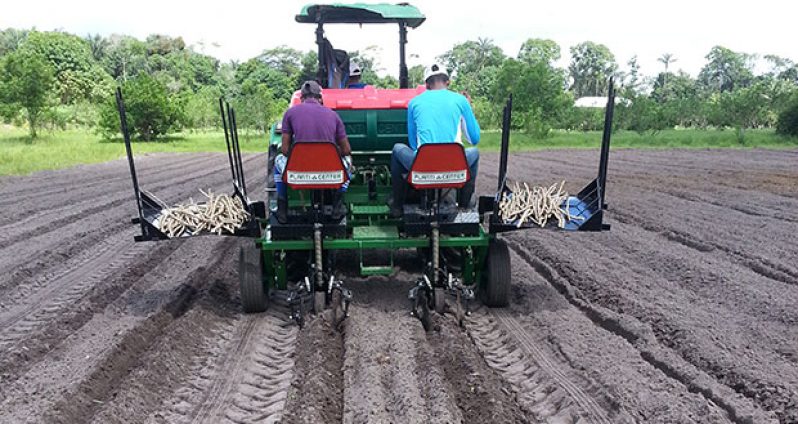Do you know that cassava can be stored in the ground for several seasons? This, coupled with being one of the highest value calorie foods, makes cassava one of the ideal crops for food security.

This tropical root crop is a staple in Indigenous communities and is enjoyed by a wide cross section of Guyanese. While cassava is a common ingredient in soup and methem it could be used in the baking and poultry feed industries.
The National Agricultural Research and Extension Institute (NAREI) recently conducted studies which successfully proved that grated cassava could be incorporated in bread making and poultry feed. However, local cassava production needs to increase for this to become a reality.
As such, the Ministry of Agriculture through NAREI has been partnering with regional and international bodies to boost local cassava production. In 2014, the Regional Development Project geared towards increasing cassava production commenced. The project was funded by the Food and Agriculture Organization (FAO) and implemented by the Caribbean Agricultural Research and Development Institute (CARDI). Guyana, Jamaica and Grenada were the beneficiaries of this pilot project.
The objectives of the project were to increase cassava production and productivity using good farming practices and relevant technologies such as limestone and bio stimulant. The field component of the project began in 2015 and the Guyana chapter is now completed with several success stories.
Guyana was the only country to receive technologies for both small and large scale productions. Several local farmers from cassava producing areas including Salem and Parika participated in the project. In addition, NAREI’s Horticulture Station at Kairuni was used as a research site. There, five acres of land were cultivated with cassava.

According to Omaira Rostant, Scientist of CARDI, a lot of farmers wanted to increase acreage to increase productivity. However, increased acreage does not necessarily mean higher productivity. With good agronomic practices and utilization of modern techniques farmers can have better yield without expanding farmlands.
Results from the experiment proved that the project achieved its objectives. Rudolph Fraser is one of the local cassava farmers who allowed NAREI to cultivate one acre of his farmland for this research.
This research was a learning opportunity for Fraser. Previously, Fraser approached farming using very basic methods – plough the land, plant the sticks. Impressed by what he saw on the experimental plot, even before the research was completed, Fraser adopted the techniques used by the project.
He is anticipating a bountiful harvest within the next four months. Fraser had incorporated the techniques he learned from the project such as the addition of bio stimulant (his preference over limestone) to the soil and the treatment of planting materials prior to sowing.
According to Dr. Oudho Homenauth, Chief Executive Officer of NAREI, the interventions that were implemented had to do with improving the agronomy of the crop, starting with basic soil testing to ensure the conditions are right; propagation; and mechanization.
“We would have incorporated limestone in some of the experiments that were done as well as demonstrations to show farmers the benefits of the use of limestone.
Of course, the result would have shown how important this ingredient is in terms of improving production…also introduced the use of bio stimulant in the project. This was another costly exercise to enhance production and productivity.” he noted.
Dr. Homenauth emphasized that an important aspect of the project was the mechanization of cassava cultivation and harvesting. This was the first time in Guyana that machines were used in cassava production.
“…mechanization is the obvious way to go if we are to increase acreages and expand farms…Our farmers have been very enthuse with what they see when the equipment are being utilized.
“Our intention is to make this equipment available to farmers who are interested in doing large scale cultivation…that is a plus for cassava farmers in Guyana,” Dr. Homenauth related.
Guyana’s success story will be shared with other farmers in the Caribbean Region. Rostant and a two-man team from Tech4Agri were recently in Guyana documenting the achievements of the project.
The information obtained will be used to create electronic training materials that will be disseminated to farmers and other agencies.



.jpg)











